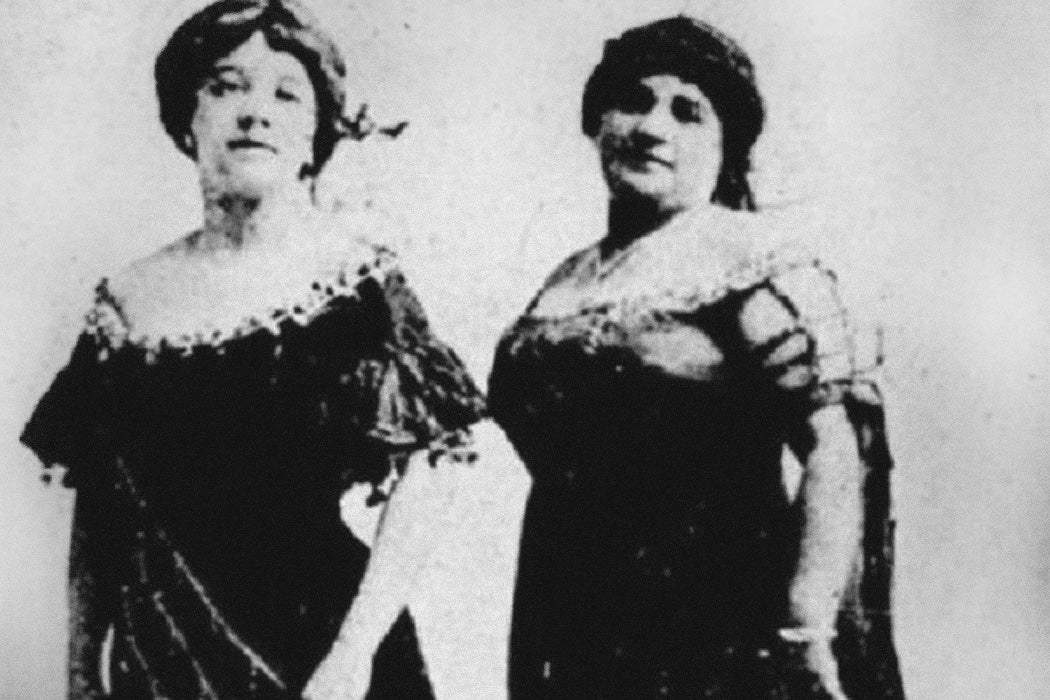In the 1910s, the Griffin Sisters were a hot vaudeville act. Mabel was the straight woman of the duo, setting up her older sister Emma’s punchlines, and both were talented singers and dancers. As historian Michelle R. Scott writes, they were also groundbreaking entrepreneurs and “race women” with a vision of Black dignity through entrepreneurship.
Born in Louisville, Kentucky, to a laundress mother and laborer father, the Griffins began performing as chorus girls at variety shows in the early 1890s. After moving to Chicago in 1894, they performed as “teaser attractions,” singing, dancing, and telling jokes to lure audiences to white-managed vaudeville performances.
In the first decade of the twentieth century, the sisters became a recognized act on white vaudeville circuits, traveling around the country performing comedy routines interwoven with popular music. They sometimes earned as much as $200 a week (around $6,000 in today’s dollars). But their earnings weren’t on par with their white counterparts, and they faced difficulty with travel, bookings, and lodging due to Jim Crow laws.
In the 1910s, the sisters increasingly performed on their own terms for Black audiences. They also wrote their own material and song lyrics. In a 1911 twenty-minute stage act, Emma played President William Howard Taft, with Mabel also performing a male role. In other performances, they wore stunning gowns and sang about exotic places like Hawaii and Spain.
The sisters joined Chicago’s Colored Commercial Association and worked to expand Black vaudeville circuits, particularly in the South where there were large and avid Black audiences, despite the hardships and humiliations performers sometimes faced while traveling in the region. Emma also described turning down white female stars who asked her to teach them how to imitate Black styles in order to perform insulting “coon songs.”
“Emma’s denunciation of coon shouters was not an effort to escape racially based humor in vaudeville musical performance, but arguably an attempt to be both the subject and author of the joke while reaping the financial rewards,” Scott writes.
Weekly Newsletter
In late 1913, the duo founded their own theatrical agency, attempting to provide Black performers with terms comparable to what white stars could expect. They subleased theaters in Chicago and Washington and began planning for what they termed the Griffin Sisters Vaudeville circuit. At the height of their fame in 1914 and 1915, they invested much of their considerable earnings back into their businesses while also supporting family members and funding social organizations in Chicago and Washington.
Unfortunately, the sisters’ growing entrepreneurial efforts coincided with declining health, probably related to the breakneck pace they’d been working at for decades. In 1913, Emma collapsed onstage and was hospitalized for a month. And in 1915, Mabel suffered a stroke. The two continued performing intermittently, with each sometimes collaborating with other entertainers when the other was too ill to go onstage. But in 1918, Emma died of bronchitis in her mid-forties.







